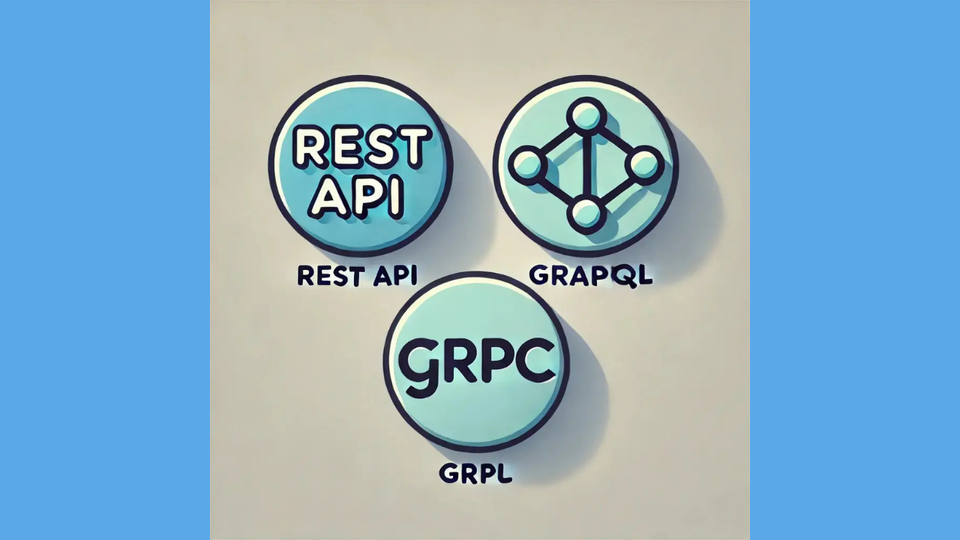RESTful vs. GraphQL vs. gRPC: Which API Architecture Works Best for You?

In today’s software landscape, API architecture plays a pivotal role in how applications, systems, and organizations communicate with each other. Postman’s 2023 State of the API Report states that:
> “Almost two-thirds of respondents said their APIs generate revenue. Of those respondents, 43% said APIs generate over a quarter of company revenue”
With such critical importance, selecting the right API design can enhance performance, ease scalability, and facilitate integration between different services. For Software Engineers, QAs, Web Devs, SDET’s, and Testers, choosing between RESTful, gRPC, GraphQL architectures will have a significant implication for the Software Development Lifecycle moving forward. Taking these factors into consideration, it is often best to make a concerted effort to determine which architecture is suitable for your next project. Let's take a few moments to break down each option.
This blog was written by Jeremy Rivera at KushoAI. We're building the fastest way to test your APIs. It's completely free and you can sign up here.
Restful APIs
REST stands for Representational State Transfer and has been the dominant architectural style for APIs for the greater portion of a decade. It relies on stateless client-server communication, typically over HTTP, with resources being represented as URLs. REST APIs are generally simple to understand and implement, using the standard HTTP methods like GET, POST, PUT, and DELETE.
This architectural approach offers several advantages (though not without occasional disadvantage) that impact their utility in an application. One of the greatest advantages of REST is its ubiquity in modern software development and design, its literally everywhere. Since REST is well understood, and trusted, there is a very large community support, leading to a wealth of libraries, tools, and documentation to assist developers.
Additionally, since REST is stateless by design, this increases scalability, for the server does not store the state of the request. Also, since REST relies on HTTP, there is a built-in caching mechanism which reduces the load on the server. Now with the positives comes the expected negatives. REST has a potential to lead to some inefficiencies in the form of over-fetching or underfetching, where the client may download more data than what is necessary.
As an application’s usage of REST APIs grow, it may also prove burdensome to version their APIs properly, leading to unmitigated complexity. Granted, with proper adoption, REST shines with simpler applications, or where a wider compatibility with other services are required.
GraphQL
We next will discuss a shining newer addition to the API landscape with GraphQL. Originally developed by Meta (formerly Facebook), GraphQL offers a fresh and flexible approach to APIs. Rather than interacting with fixed endpoint (such as REST), clients send a query (hence the QL,for Query Language) specifying exactly what they need.
This approach eliminates the aforementioned problem with REST, namely over-fetching or under-fetching data. This tailored approach to data retrieval allows a client to control the shape and size of the response which reduces the amount of data transferred. GraphQL also operates through a single defined endpoint, minimizing the need to several API calls to streamline the communication with the server.
There is another benefit due to its support for subscriptions, making it well suited for applications processing data real-time. Due to the ubiquity of REST and the change in pulling data, GraphQL does require a learning curve and because of that, writing efficient queries may prove cumbersome without prior practice. And once an error occurs it may prove more complicated than REST to debug.
A consideration needs mention, since traditional HTTP caching does not apply, the implementation of a custom caching mechanism is necessitated. This approach thrives in an application which aims to minimize the transfer of data or requires flexibility in its request.
gRPC
Developed by Google, gRPC (Google Remote Procedure Call) is a high-performance framework which uses protobufs (Protocol Buffers) for efficient data serialization, thus promoting faster communication (due to a reduction in the size of the payload).
It has a language-agnostic approach which enhances its versatility in use cases and considering the support of several different programming languages, it is ideal for a microservices architecture in which several languages may very well be used in different services. This style also offers bi-directional streaming, which allows the data to flow in multiple directions which proves beneficial in real-time/high volume applications such as video streaming services or video chat applications.
However, gRPC also has some downsides, including a complex setup process that can prove challenging regarding authentication, load balancing, and monitoring. Moreover, its reliance on HTTP/2 may pose browser compatibility issues, since not all browsers currently have complete support for this protocol, which limits its usability in web-based environments without support for gRPC-web.
Which style is the definitive winner?
In reality, the tool depends on the trade. A hammer won’t be used properly on a screw, and a drill to cut wood. Each approach shines with different use cases. Some suggestions to consider and recommendations are as follows:
- If the application merits simplicity and broad compatibility, REST remains a solid choice.
- If flexibility and reducing the amount of data fetched are the priorities, GraphQL may be the best option.
- For a highly-performant application need, particularly in a microservices architecture, gRPC offers unparalleled speed and efficiency.
Each architecture has its strengths and weaknesses, and understanding those trade-offs will help. Choosing the right API architecture will streamline development and provide a better experience for both developers and end-users and therefore there is merit to knowing, at least from a glance, what each tool and style does, and how it does it.
To further streamline your application development processes, try using KushoAI. With its AI-driven testing capabilities, KushoAI will transform your API specs into comprehensive test suites, ensuring that you can build robust applications with confidence as you reduce the risk of bugs in your code. By integrating KushoAI into your current workflow, you can focus more on innovating and less on manual testing.
This blog was written by Jeremy Rivera at KushoAI. We're building an AI agent that tests your APIs for you. Bring in API information and watch KushoAI turn it into fully functional and exhaustive test suites in minutes.

Member discussion